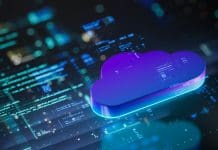Rebecca De Cicco, global chair for Women in BIM and principal for digital enablement at Aurecon, looks at the role of digital twins in asset information management
The importance of drawing synergies between how we design, build and manage assets must be defined by how information is specified at the earliest possible stage. Once this information is delivered, responsibility ultimately lies on clearly defined information requirements relating to how that information will be used during an asset’s operation.
Globally, we are fortunate to now have a published suite of standards supporting a consolidated approach to information management in the ISO 19650 series. With this, there are even greater links to being able to specify more from the supply chain and the data received from the way the asset is managed in terms of technology, process and the extraction of valuable data.
The definition and understanding of the digital twin, as well as solutions relating to the golden thread, are critical to the future development of our industry – not just in the way we deliver information but, more importantly, how we use that information well into operation and the continued life cycles of our built assets.
In the past few years, the term digital twin has very much been something new for many in the construction industry but across other industries, the term has been used for some time. The beginning of the term digital twin was coined as far back as the 1990s, where work was undertaken at Yale University to develop and support something called “mirror worlds” – or the relationship between the physical and digital worlds.
Women in BIM (WIB) engages with industry to help those working in the digital space to understand and work with these frameworks. We know that there are regions of the world less mature than others in the application of BIM and digital twin methodologies. As a result, we strive to communicate and educate our network on the importance of the term digital twin and what it means to our industry. Digital twins are very much a digital replica of a physical object, but with live data advising us on how the asset runs and operates. The problem is there is no clear link to the requirements around ISO 19650 and the opportunities for digital twins globally, and often these two subject matters are discussed in isolation.
It is only now that we can enforce the principles of digital twins as we have the digital capability and knowledge to do so, as well as a consistent framework to develop information requirements and structured information management process set out in the ISO 19650 series. The challenge for us is the digital twin outcome – not the digital twin product. This idea and the definitions are often confused and it is essential we communicate what the outcome based approach looks like.
Before we can progress to this stage, however, there is a need to have the structure in place, the authority and even secure arrangements around how we digitally link elements (not just buildings and infrastructure but any physical element) to each other, this requires a framework around it as well as guidance in place. This is why the requirements around the Gemini Principles form a strong framework around the development of the National Digital Twin Programme – as well as the information management framework which we constantly draw visibility to across our network.
ISO 19650 allows us to formulate clearly defined requirements around the operational phase of assets but this is not enough when it comes to applying methodologies and strategies around specifying the digital twin outcome. Having these clearly defined information requirements in place only supports the concepts of the digital twin, as well as the requirements around the National Digital Twin Programme as outlined by the Centre for Digital Built Britain, rather than how it can be achieved.
The mission of the National Digital Twin Programme is to enable an ecosystem of connected digital twins that will deliver better outcomes for the built environment. This is to be delivered through the Information Management Framework, a digital information management landscape and data environment which will adequately define parties, processes, information and technology to support the National Digital Twin.
The National Digital Twin also offers better outcomes for all asset stakeholders; for society, the economy and the environment, with increased productivity, less waste and in turn becomes an enabler of a circular economy. Better sharing of information, reuse of materials and direct action to tackle complex challenges such as climate change and reducing our carbon footprint.
When delivered well, digital information management provides the means for the construction industry to adapt and thrive within an evolving digital landscape – it is the key to unlocking enormous potential, and the likes of the digital twin and the golden thread are essential outcomes to take us to the next level of development, where we see greater collaboration and sharing of project information.
When information is used correctly, it becomes the golden thread and when combined with the use of digital twins, we have at our fingertips an advanced analytical tool – providing a platform that changes the traditional way of how we build and manage our assets.
There has never been a more important time to embrace digital construction methodologies than today; now is the time to change the way we share our data and the future of the construction industry is to be driven by the integration of the digital twin into asset information management.

Rebecca De Cicco
Global chair
Women in BIM
https://twitter.com/womeninbim
https://www.linkedin.com/groups/4637534/














